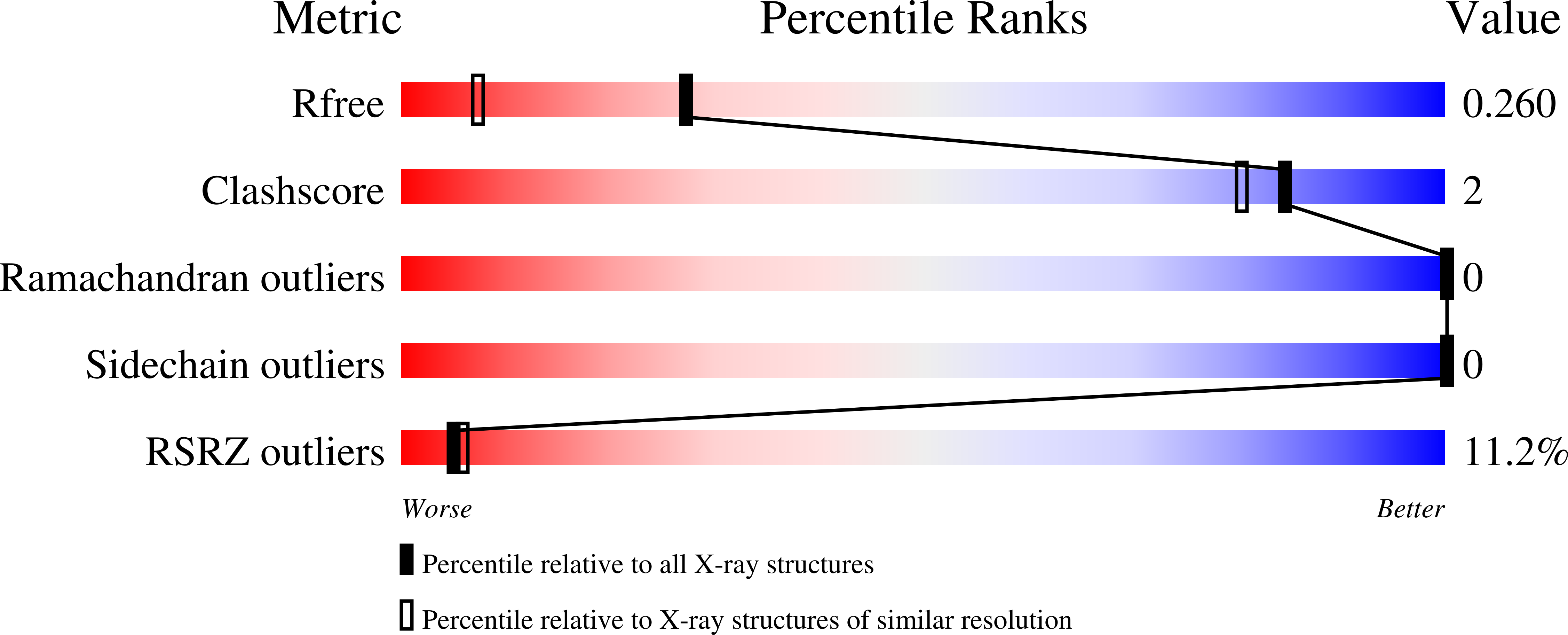Energetic and structural analysis of the role of tryptophan 59 in FKBP12
Fulton, K.F., Jackson, S.E., Buckle, A.M.(2003) Biochemistry 42: 2364-2372
- PubMed: 12600203
- DOI: https://doi.org/10.1021/bi020564a
- Primary Citation of Related Structures:
2DG3, 2DG4, 2DG9 - PubMed Abstract:
Tryptophan 59 forms the seat of the hydrophobic ligand-binding site in the small immunophilin FKBP12. Mutating this residue to phenylalanine or leucine stabilizes the protein by 2.72 and 2.35 kcal mol(-1), respectively. Here we report the stability data and 1.7 A resolution crystal structures of both mutant proteins, complexed with the immunosuppressant rapamycin. Both structures show a relatively large response to mutation involving a helical bulge at the mutation site and the loss of a hydrogen bond that anchors a nearby loop. The increased stability of the mutants is probably due to a combination of improved packing and an entropic gain at the mutation site. The structures are almost identical to that of wild-type FKBP12.6, an isoform of FKBP12 that differs by 18 residues, including Trp59, in its sequence. Therefore, the structural difference between the two isoforms can be attributed almost entirely to the identity of residue 59. It is likely that in FKBP12-ligand complexes Trp59 provides added binding energy at the active site at the expense of protein stability, a characteristic common to other proteins. FKBP12 associates with the ryanodine receptor in skeletal muscle (RyR1), while FKBP12.6 selectively binds the ryanodine receptor in cardiac muscle (RyR2). The structural response to mutation suggests that residue 59 contributes to the specificity of binding between FKBP12 isoforms and ryanodine receptors.
Organizational Affiliation:
MRC Centre for Protein Engineering, Hills Road, Cambridge, CB2 2QH, UK.
















